

In Japanese, the cherry is called “Sakura', which is generally believed to be a corruption of the word “Sakuya” (blooming) from the name of Princess Kono-Hana-Sakuya-Hime, who is enshrined on the top of the mountain Fuji. This long name means “tree-flowers-blooming princess”, for the cherry was so well known in those early days in Japan that the flower meant nothing but cherry. The princess was so named because, it is said, she fell from heaven upon a cherry tree.
The cherry blossom is the flower of flowers to the Japanese people. It symbolizes their national character. This is because the life of a samurai of feudal times was proverbially compared to the short-lived cherry blossoms that last “no more than three days”, for a samurai was always ready to sacrifice his life for the sake of his master. Another saying is that “what the cherry is among flowers is the samurai among men”.
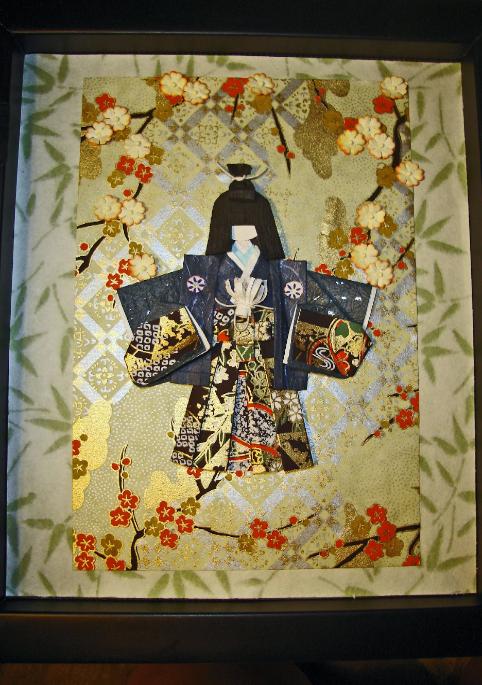
The Japanese are very proud of their Sakura. They love to see not only the single petal cherry blossoms in their prime and freshness, they also relish the beauty of falling snowy petals in the spring breeze. Of all flowers, the cherry blossoms appeal most to the aesthetic taste of the Japanese people. The Japanese people are never so jubilant, cheerful, optimistic and youthful as they are at the time of “Sakura” blossom.
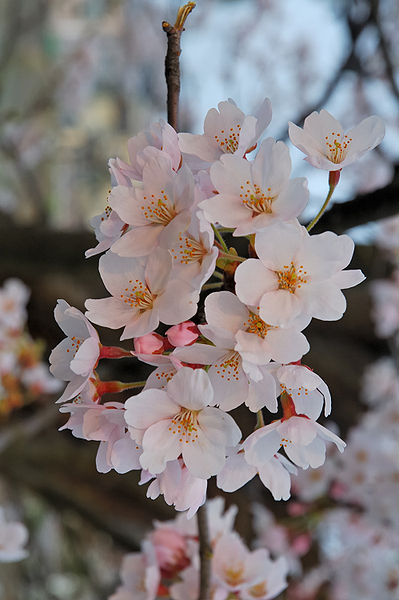
Since very early days, the people have expressed their love and admiration of the flower in various ways; poets and artists have always been eager to depict the loveliness of the blossom in words and colors. So universal is the Japanese appeal to the moral and aesthetic taste of the nation that they constantly use “Sakura” as a motif on kimonos, lacquerware, pottery and other decorative items.
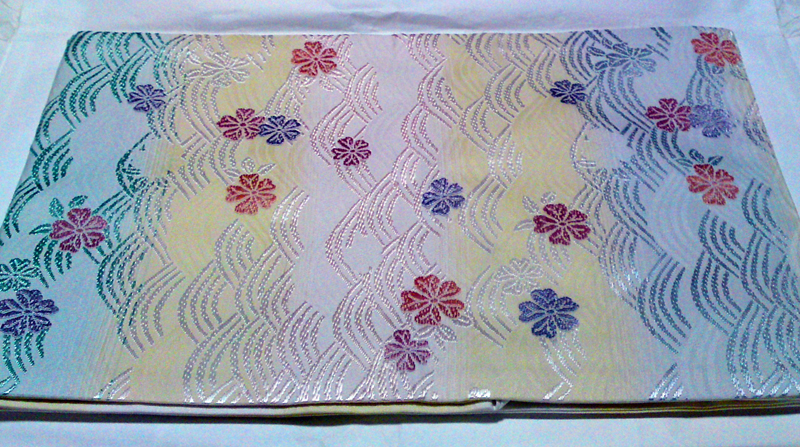
Beautiful as it is in bloom, the Japanese cherry tree does not yield fruit like other cherry trees. A critic once remarked that the Japanese cherry does not have to produce a market crop because it is born aristocrat and its single mission is to be beautiful. But it renders a very useful service to the Japanese people. The wood of the cherry tree is very valuable. It is used for producing color prints, furniture, trays, ornamental columns for alcoves and so on. In old days Sakura wood was used for making printing blocks for books and pictures.
The cherry is extensively cultivated in Japan, though it grows wild on plains and in deep mountains in the country. It can also be found along many river embankments. When blossoming season comes, these trees on winding river embankments turn into gorgeous belts of blossoms extending many miles. It is said, ancient people started to plant Sakura trees on river banks, so that people would be lured to come and their walking on the embankments would solidly pack the earth to make it strong enough to withstand the flooding water in autumn.
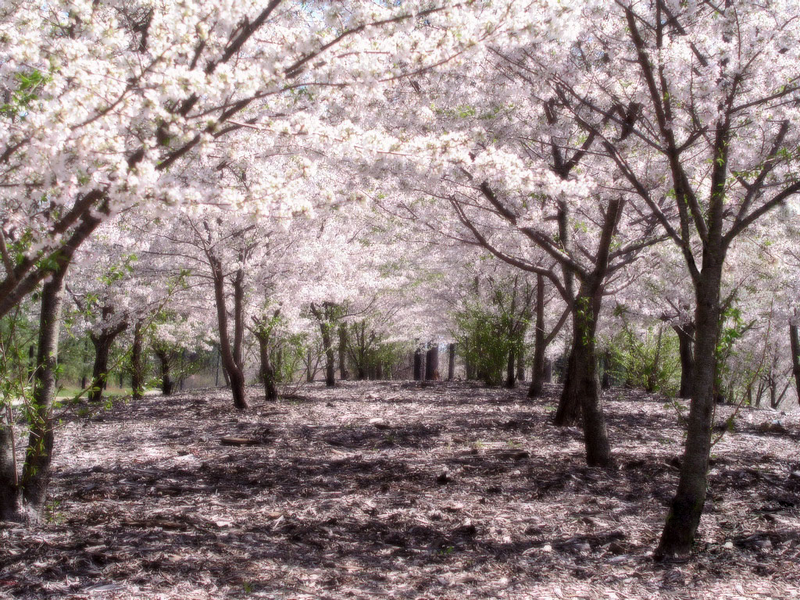
It is known that when Sakura tree is forty or fifty years old, it is some thirty or forty feet high, with a trunk three, four, or even six or eight feet in circumference.
There are many varieties of Sakura with blossoms of different blooming time. In the southern warmer region it blooms earlier than in the northern area. So if one starts viewing Sakura in Southern Kyushu in the middle of March, and proceeds northward enjoying the blossom, he/she will end up in Hokkaido in May.
The blooming period of Sakura is very short, and in a few days the flower is scattered away in the spring breeze. So the people are long accustomed to stop their daily work or close up their shops to have Sakura viewing picnics at the best and most convenient places. It is the merriest occasion of the year, with drinks, music and songs. Many people wear ridiculous masks and fantastic costumes aimed at provoking laughter and good fellowship. Amateur musicians may be seen tripping to the twang of the shamisen, trying to recapture the atmosphere of the old Edo period when life ran smoothly in the old groove. Those who wish to enjoy flower viewing in a quiet atmosphere make visits as early as 8 or 9 A.M before boisterous merrymaking begins. They may also choose a remote mountain or sea shore regions which are not visited by very many people.
Sakura blossoms are preserved in salt. When the preserved flowers are put into hot water, it makes a fragrant and delightful drink. It is beautiful, too, as the salted blossoms open up in the cup of hot water. This drink may be served at any time, but particularly at the first meeting of a would-be bride and groom, wedding ceremony and parties. Traditionally people do not serve tea at wedding party, as “chakasu” (turn to tea) means “to turn everything to a jest”. So the serving of tea at wedding ceremony may become an omen to turn the marriage into a failure. Sakura beverage, on the contrary, is served in prayer for the happiness of the newly-wed.
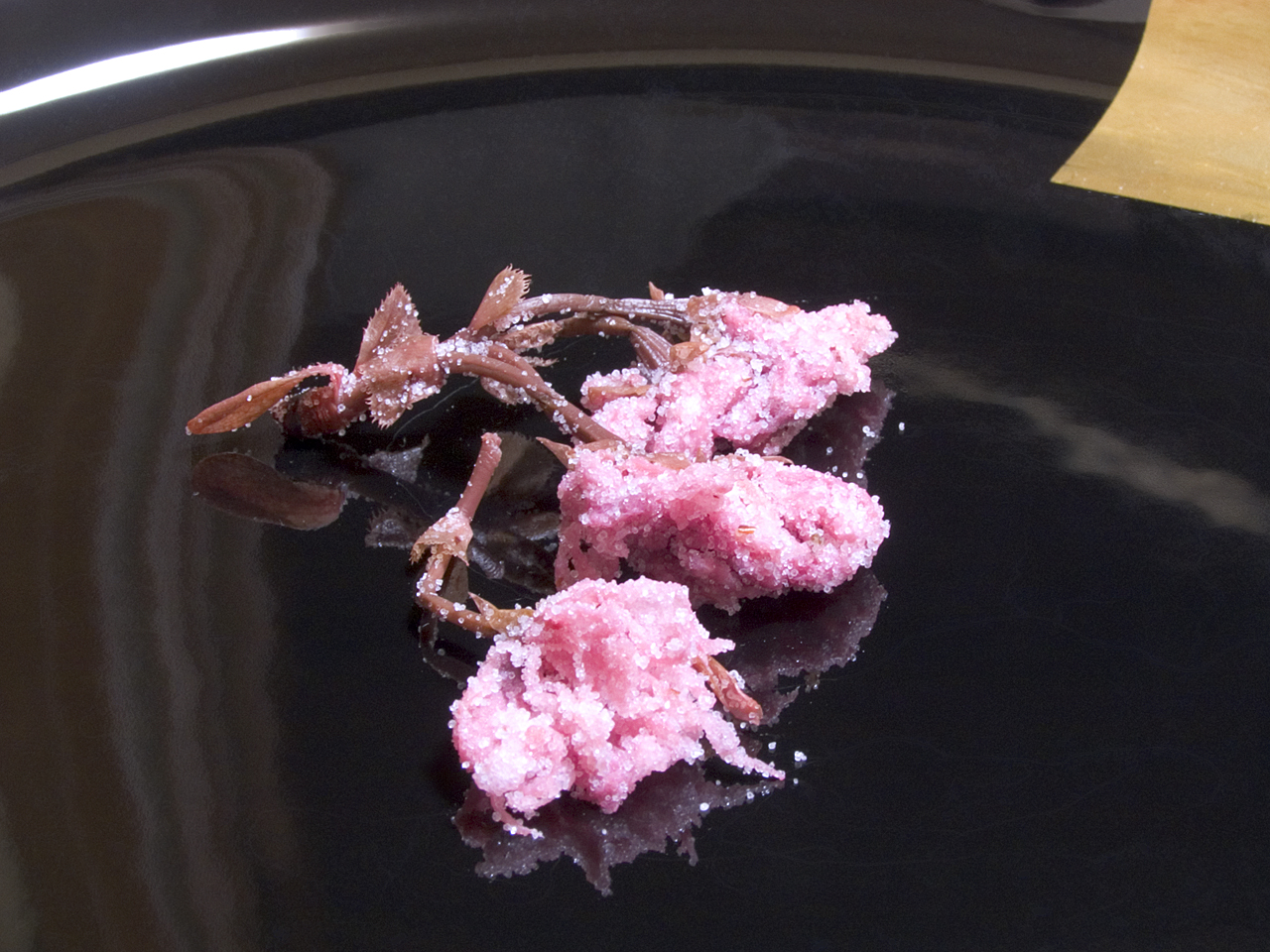
There is one more tradition, which is connected with the beautiful trees of Sakura. During Girls Doll Festival in Ilarch, confectioners carry a stock of Sakura mochi, a dumpling containing sweet bean paste wrapped in a pickled cherry leaf.
Cherry trees all over Japan will soon burst into clouds of pink blossoms in early April to thrill once again the hearts of the Japanese people with their ancient glory and liveliness. It all depends on the local weather conditions, but during April almost all known cherry resorts in the country will be flushed with banks upon banks of cherry blossoms, the coronation of spring, drawing hundreds of thousands of holiday-makers daily for cherry viewing.
By Inna Colenciuc (ULIM) - Moldova Magazine
Teacher Resources:
Other websites to visit:
Image resources: